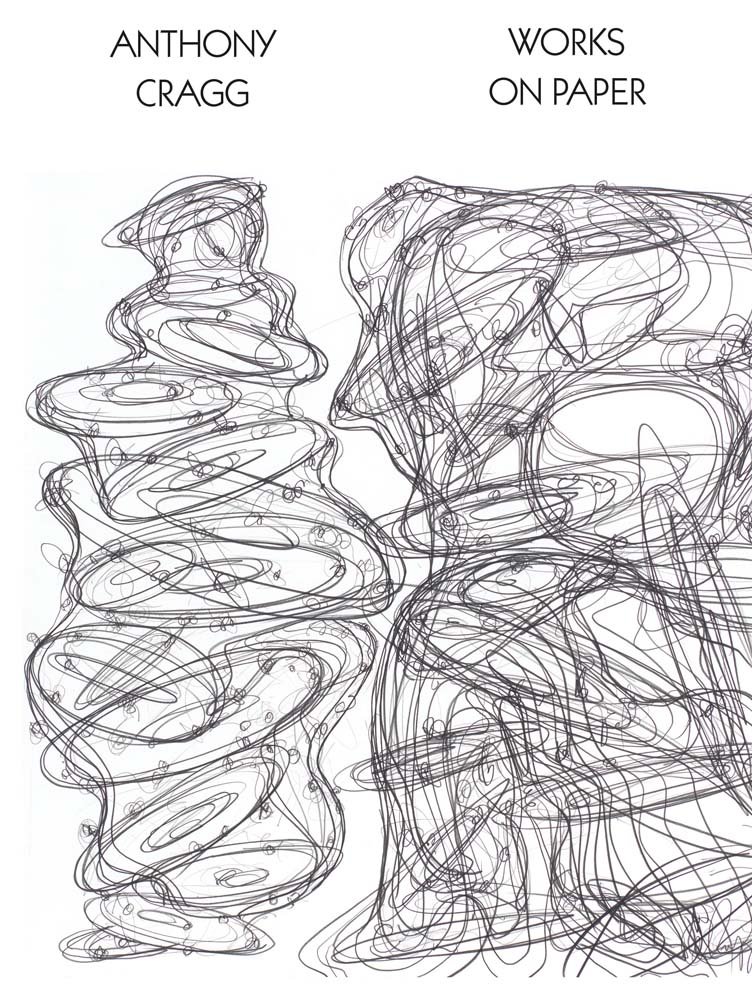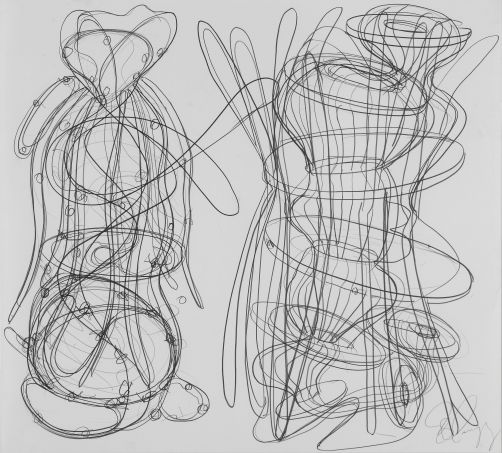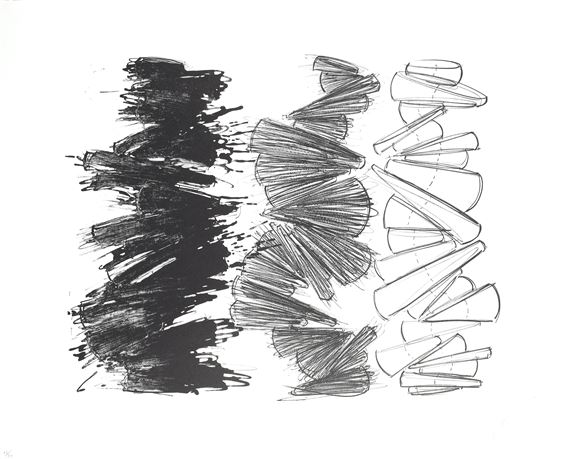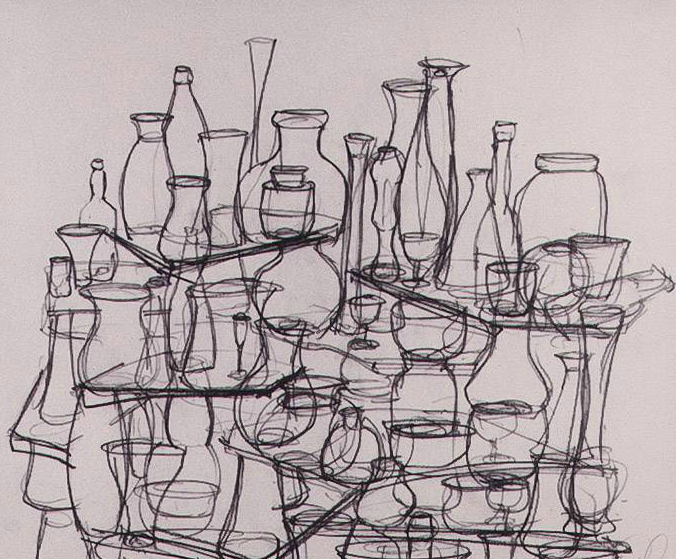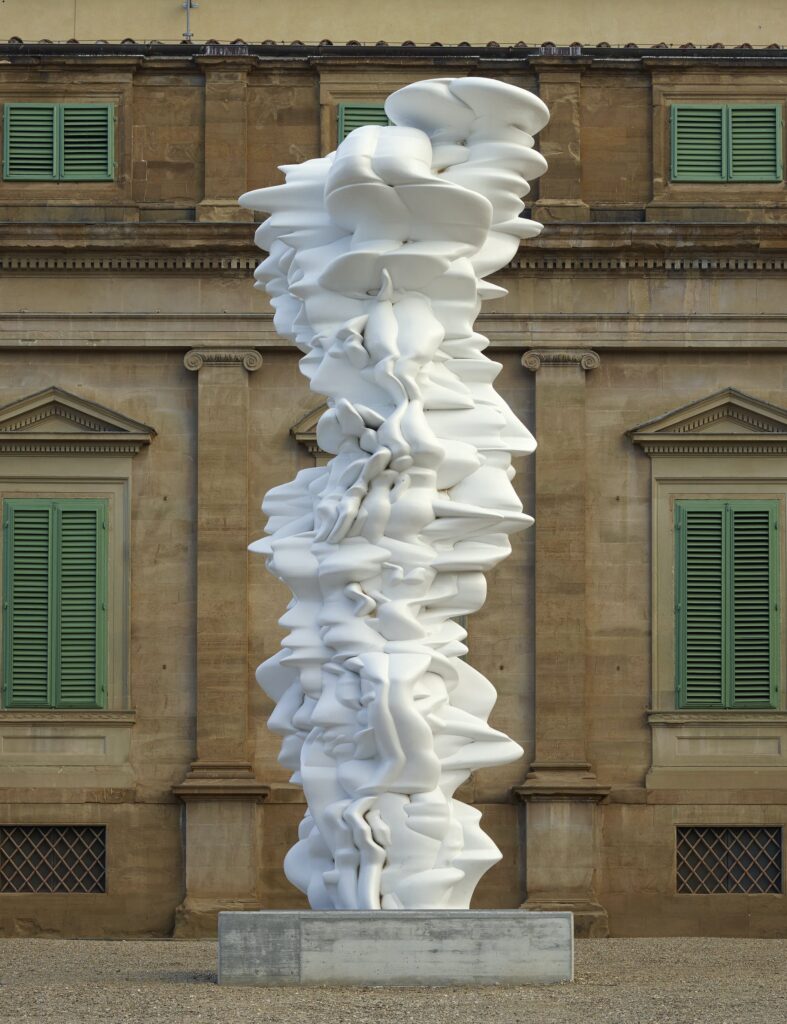Today, I started a new visual art brief titled: ‘Palimpsest’. I will learn to understand the meaning of this word as I proceed to draw, rub out, cut, print, fax and use, and reuse found materials to create a range of diverse layers, or aspects beneath a surface. By responding to the artwork, its media, strategy or its idea, I will be lead in another direction to either extend, or start another idea or artwork, and so on. This continuation of constructing and deconstructing layers to create Palimpsest artworks may be cyclic, my ideas may take me back to the start where I began, or may end in another place altogether.
I am excited about this Palimpsest brief, because I seem to notice layers all around me, and have a rapport with layers. Autumn and Spring months mean layering my clothes, and I am always building and arranging natural material layers such as fresh flowers in a vase, a green salad on a dinner plate, Autumn leaves, a firewood pile outside, then inside on a fire, river stones in a garden, or shells on the sand. I have great admiration for the layers of nature such as the Punakaiki (Pancake rocks) on the West coast of the South Island, and the organic layers within the artist Tony Cragg’s drawing and sculptural work.
Punakaiki rock layers are filed down by the sea’s fingers. The Westward facing group of figures stand guard, watching the sun fall.
Anthony (Tony) Cragg: Quote: “I am not a scientist, so I do not know what they know of the complexities behind what I can see, but just looking at and thinking about the development of Nature leaves me, as it does most people, with an enormous sense of amazement and inadequacy. It is no wonder that Nature and our relationship to it, is one of the most important subjects in art”. I too, am in awe of Nature, and in awe of how Cragg uses an elegant form of stacking and numerous layers in his sculpture, and his drawings. As you tilt your head back, Nature’s sublime sparkling lights stare back at you from their velvet blue-black night time bed, and one feels very small and inadequate under this vast, infinite blanket of a sky.
Artist Research
In 1963, Belgian artist Marcel Broodthaers shifted his artform practice, from poetry writing to working as a visual artist. Still using the poetic structural form, he created a type of graphic abstraction art that covered over a poem’s text.

I was drawn to the way that Broodthaers used Palimpsest, by eliminating a poem’s sentences with strong, black bars of lines. By removing the sight of the poem, the reader has no access to the words, due to their disappearance under the black marked layer. Instead, all that is left are simple horizontal lines placed across the page in the order and structure of the poem. The black rectangular lines have instead created a visual pattern.
I was inspired to try this with the first ‘found object’ that I noticed next to me. I made simple, rough and messy lines across the writing of a throw-away receipt. Then folded it, and held it up to the light to see the lines, and letters through the black marker. The image and meaning of the receipt ‘found object’ changed, because I was trying Broodthaers’ effect of turning a piece of writing that had a specific use, into a visual artwork. (See my rough, quick sketch below).
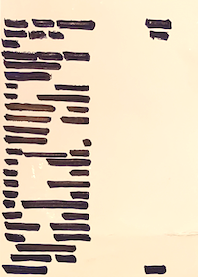
Artist Research
Mark Bradford (USA, b. 1961 ) uses a form of Palimpsest by layering paper to create large-scale abstract paintings. He adds water and bleach to change tones of paper, he sands them smooth to change the texture, and utilises glue and string/rope to connect to the paper. He titles these works paintings, but they are mostly made out of paper.
Bradford uses visual art (Palimpsest) strategies of adding, and subtracting by pulling away his paper, and marks or found objects such as rope to reveal his layers.. He uses the strategy of reprocessing by reusing street billboard posters, and builds up layers these found papers.
Some of his works uncover half hidden lettering or words that express the marginalized and objectified layers of society. His works make me think deeply about society’s layers today, and the class systems that have always occurred in every society throughout history. I reflect on the widening gap between the ‘haves’, and the ‘have nots’, locally and internationally. I am interested in politics, and have always felt for the underdog, therefore Bradford’s paper art is important to me, on so many layers.
I like paper (and paint) too. I love the texture within his works. I have used his technique of glueing layers of paper onto canvas, and I have used sandpaper to make paint smooth. I like how he removes, by sanding parts back to reveal hidden layers of shape and colour. I also feel happy seeing his large works because they are so full of colour and energy.
Perhaps I can ADD PAINT to this brief, but also SUBTRACT PAINT (a Palimpsest strategy) by using sandpaper or a sanding machine. This reminds me of my past experiences of removing wallpaper layers, (or interior paint layers) before you add new.
I am interested in different histories of different people and places, and how some societies have come and gone, and yet, their craft and art work may have remained. I also think ahead to the future human societies, and how only some social narratives (positive and negative) change.
View Mark Bradford Video and ‘Amendment – 8’ Painting by clicking on: https://americanart.si.edu/artwork/amendment-8-109468
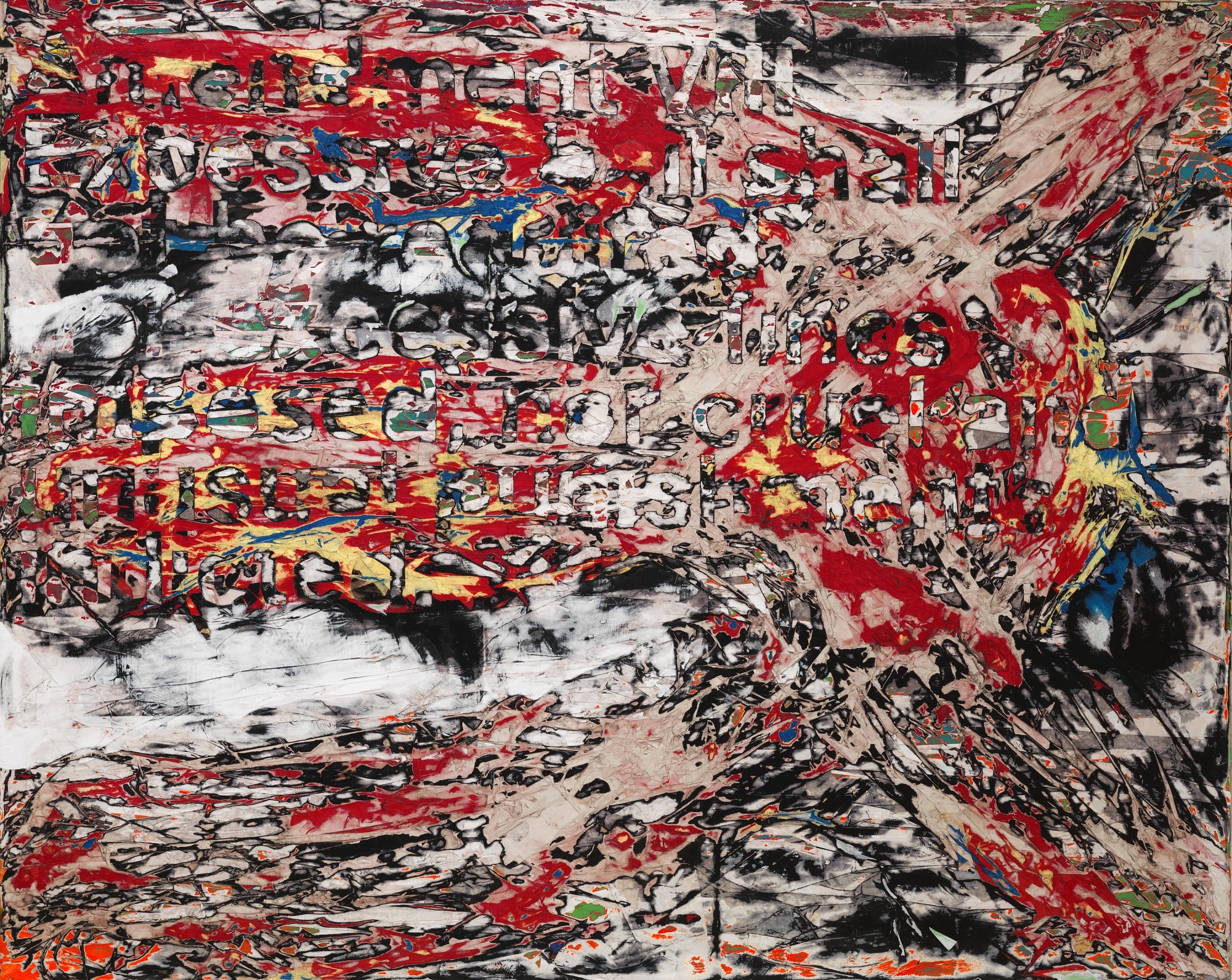
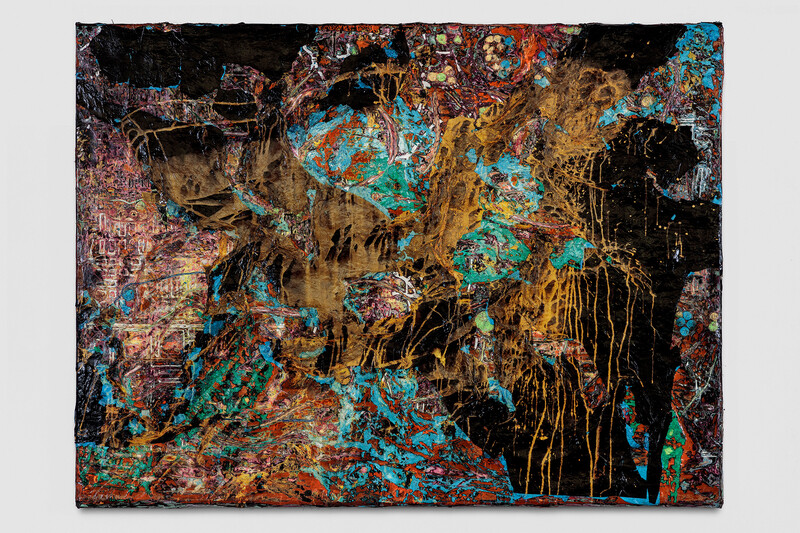
View Mark Bradford Video and Paintings by clicking on: https://www.hauserwirth.com/hauser-wirth-exhibitions/25237-mark-bradford-cerberus?modal=media-player&mediaType=film&mediaId=25953
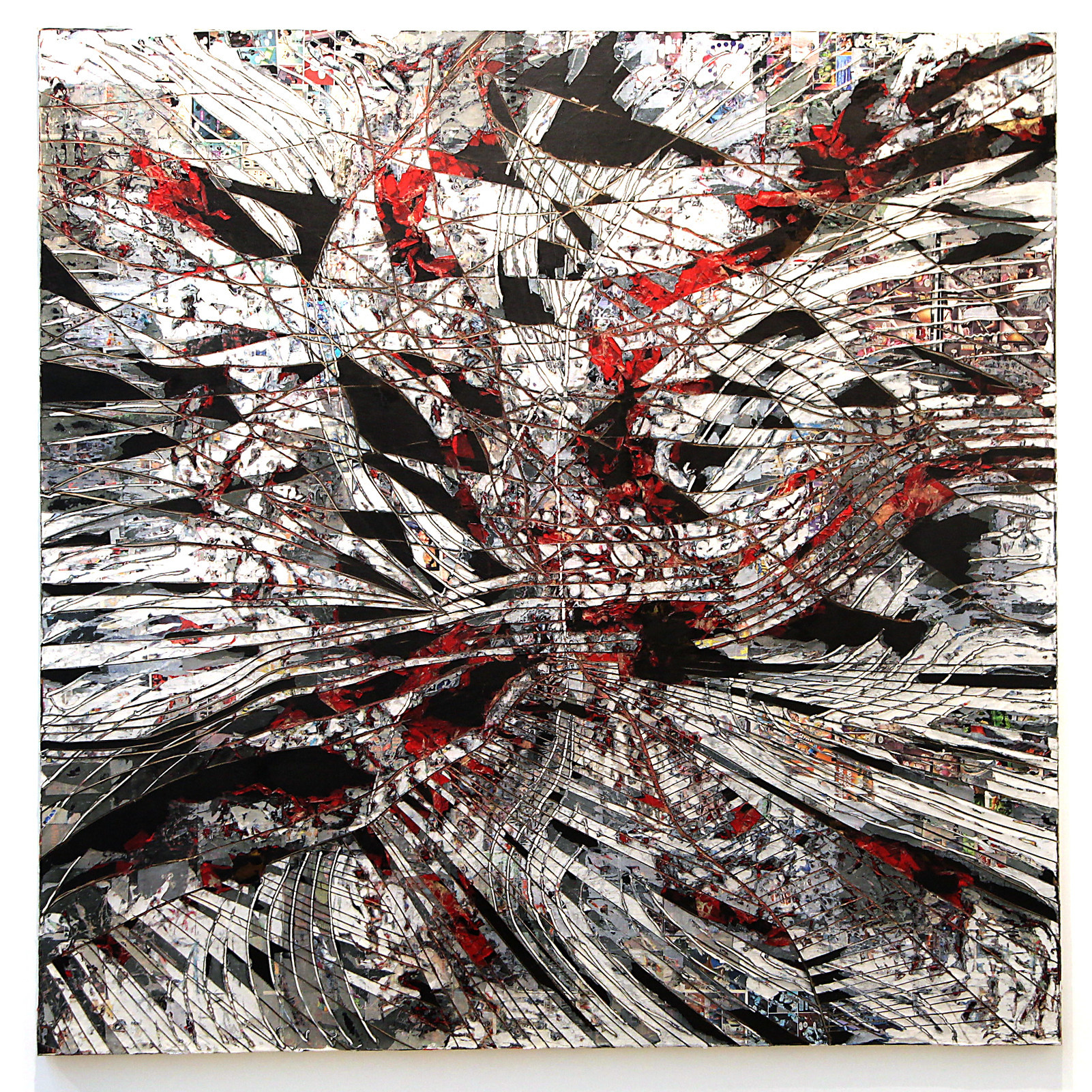
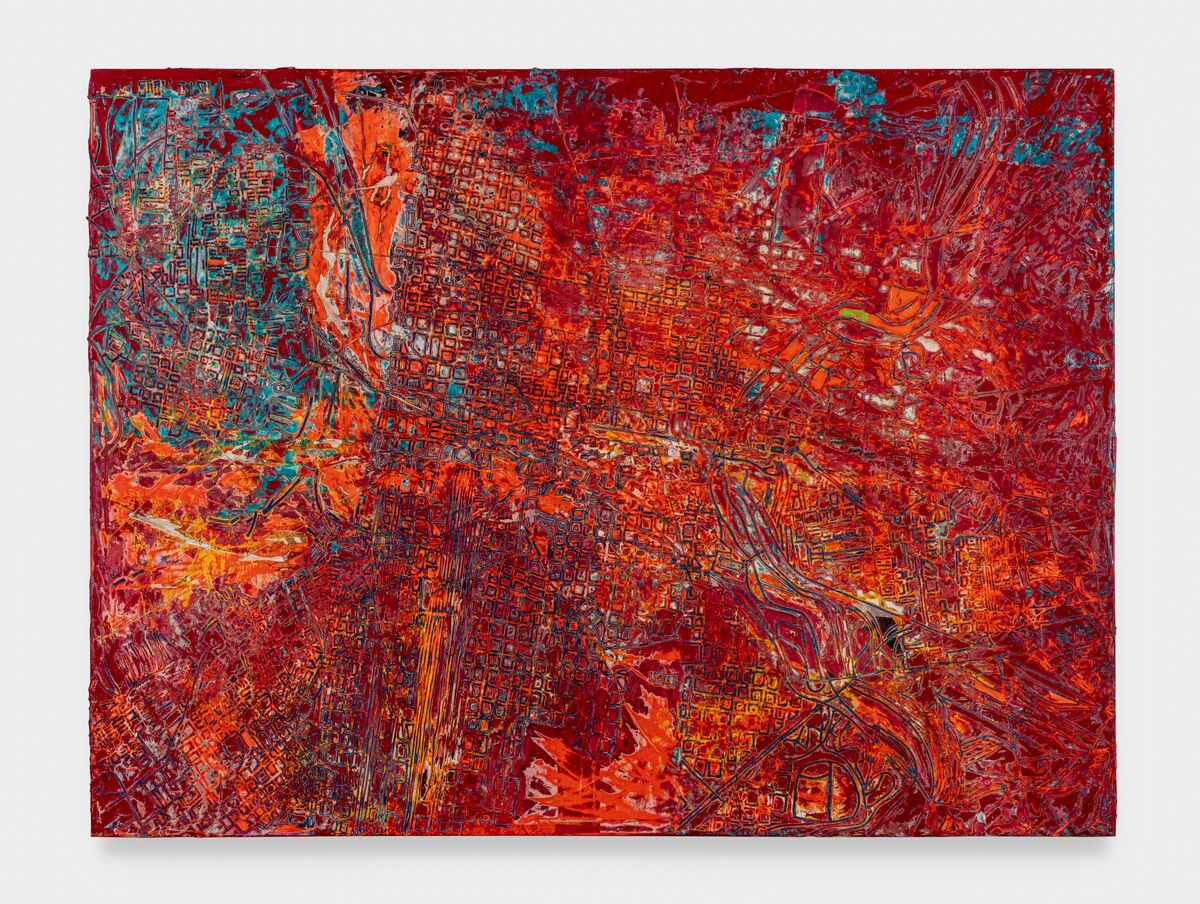
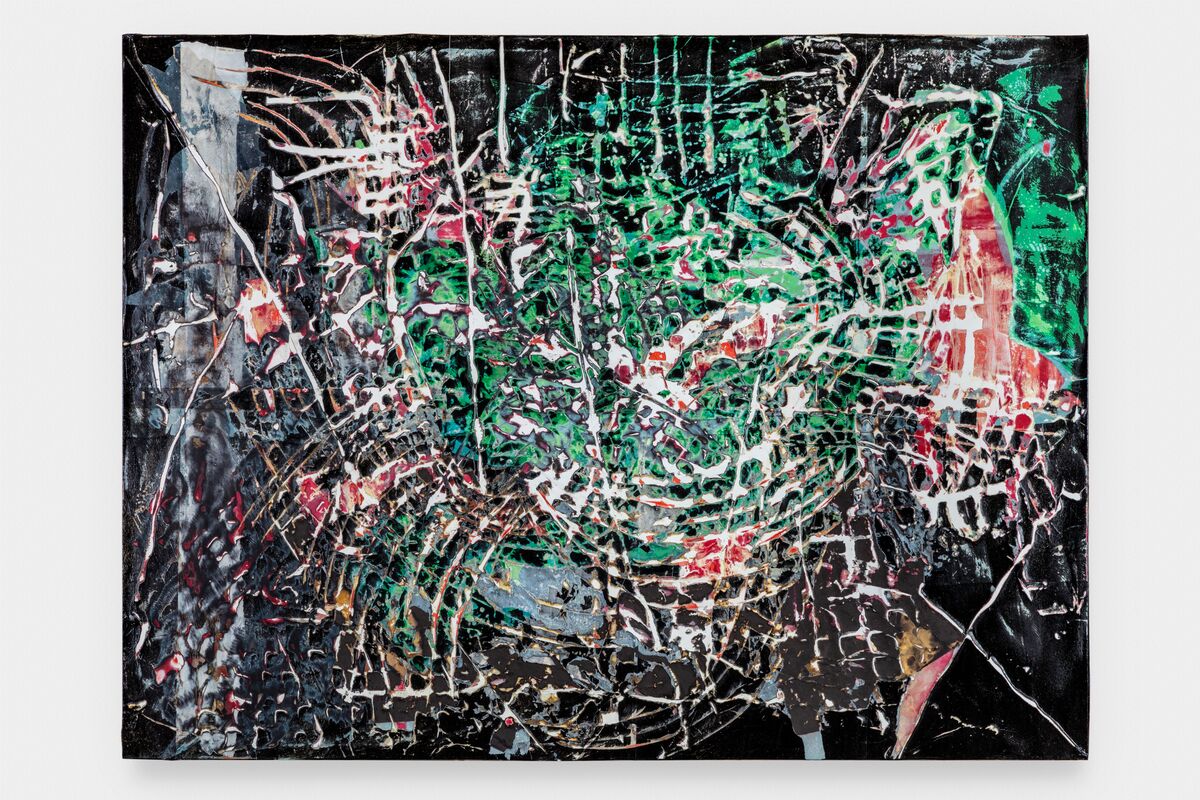
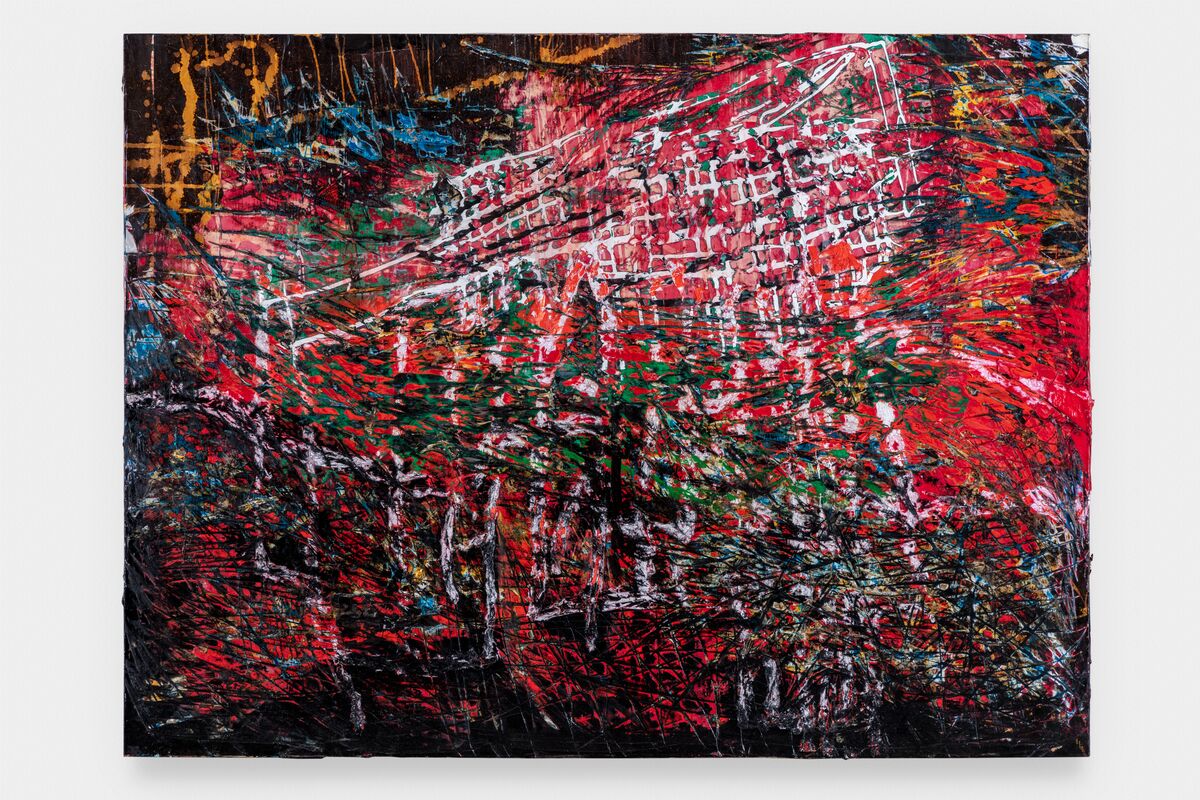
Artist Research: Neil Bousfield.
As, I was searching for artists, I came across this artwork titled ‘Palimpsest Landscape’ so I clicked to view:
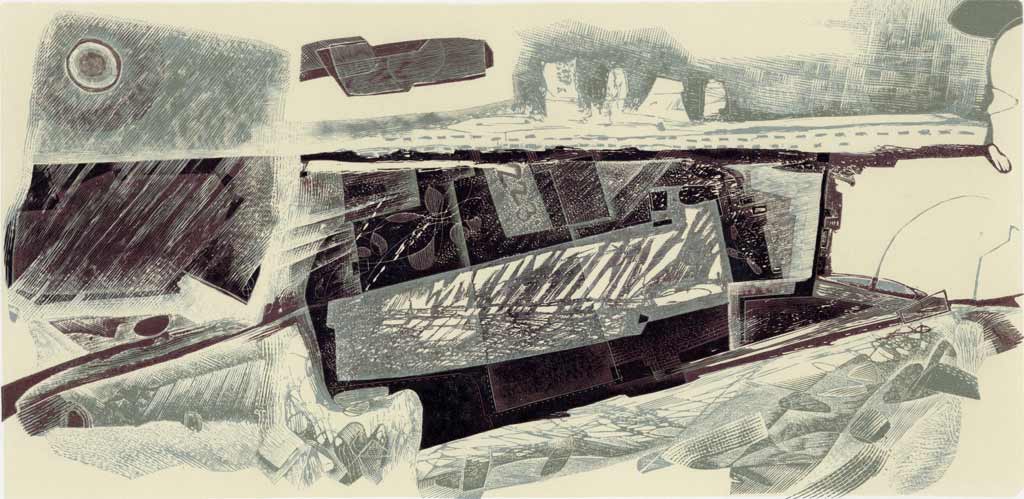
I like the drawing quality, and the layers of objects and shapes angled into different parts. For example, the moon or sun is within a rectangular, titled shape representing the sky. Therefore, the overall composition is not a typical drawn landscape set in thirds, with a horizon line, yet it still seems to have three parts. Instead, the picture has groups of planes, containing a small story within.
This print was shortlisted for the RBSA Print Prize 2018- and gained Highly Commended Winner of the Rachel Reckett Prize 2018.



